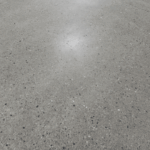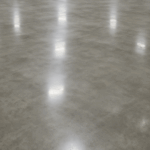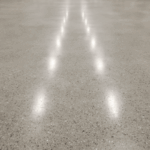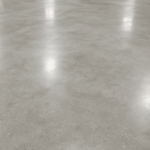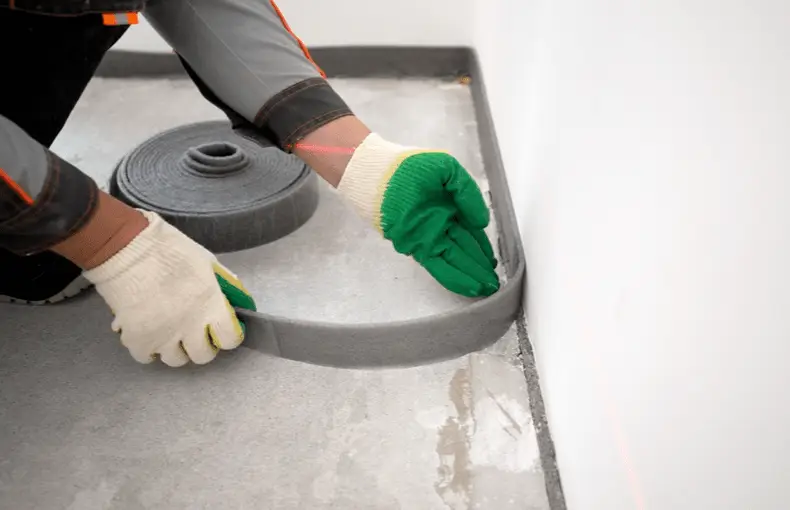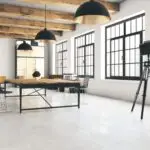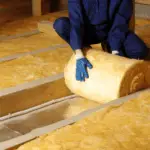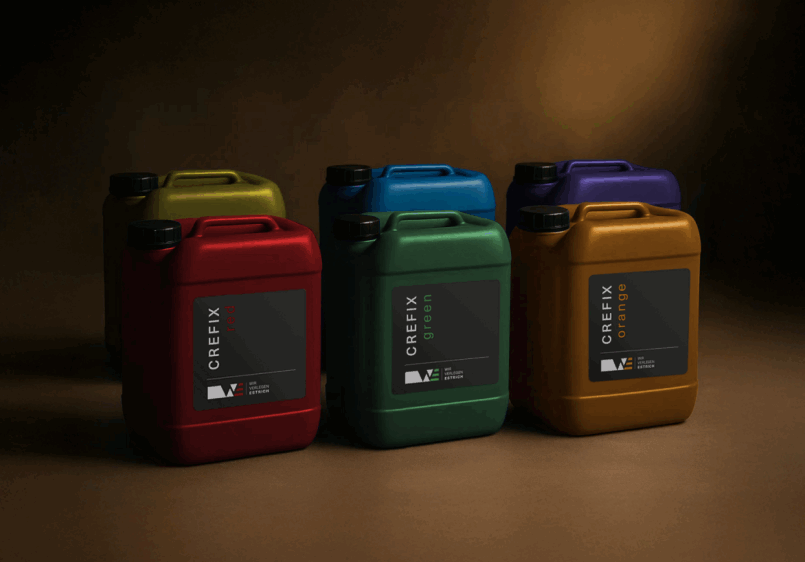Schwimmender Estrich – Wohlfühlen auf neuem Niveau
Der Wunsch nach individuellem Wohneigentum ist weit verbreitet. Nach Erwerb oder Fertigstellung einer Immobilie steht die Schaffung eines komfortablen und persönlichen Wohnumfelds im Vordergrund. Aspekte wie thermische Behaglichkeit, eine geringe Geräuschkulisse und ansprechendes Design sind dabei zentral. Eine entscheidende, wenngleich oft unsichtbare Komponente bildet hierbei der Bodenaufbau, insbesondere der Estrich. Dieser Artikel erläutert die Funktion und Bedeutung von schwimmendem Estrich für die Wohnqualität.
Estrich: Definition und Funktion im Bodenaufbau
Estrich bezeichnet die Schicht im Bodenaufbau, die zwischen der tragenden Unterkonstruktion (z. B. Rohbetondecke, Holzbalkendecke) und dem finalen Bodenbelag (z. B. Parkett, Fliesen, textile Beläge) eingebracht wird. Estrich erfüllt mehrere technische Funktionen:
- Ausgleich von Unebenheiten des Untergrunds.
- Herstellung einer ebenen, tragfähigen Verlegefläche für den Oberbelag.
- Lastverteilung auf die darunterliegende Trag- bzw. Dämmschicht.
- Aufnahme von Fußbodenheizungssystemen (als Heizestrich).
- Beitrag zur Schall- und Wärmedämmung (in spezifischen Konstruktionen wie dem schwimmenden Estrich).
Grundsätzlich differenziert man drei Hauptverlegearten: Verbundestrich, Estrich auf Trennlage und schwimmender Estrich, wobei letzterer im Wohnungsbau die dominierende Variante darstellt.
Das Prinzip des schwimmenden Estrichs
Die Bezeichnung “schwimmend” verdeutlicht das Konstruktionsprinzip: Die Estrichplatte weist keine starre, direkte Verbindung zur tragenden Unterkonstruktion oder zu angrenzenden bzw. durchdringenden Bauteilen (Wände, Stützen, Rohre) auf. Sie ruht auf einer durchgehenden Dämmschicht und wird durch flexible Randdämmstreifen umlaufend von allen vertikalen Bauteilen getrennt.
Schichtenaufbau (Regelfall ohne Fußbodenheizung)
Der typische Aufbau eines schwimmenden Estrichs gestaltet sich von unten nach oben wie folgt:
- Tragender Untergrund (z. B. Rohbetondecke)
- Ggf. Ausgleichsschicht oder Installationsebene
- Dämmschicht (Material und Dicke gemäß Anforderungen an Wärme- und Trittschallschutz, z. B. EPS, Mineralwolle)
- Abdeckschicht/Trennlage (z. B. PE-Folie als Feuchtigkeitsschutz für die Dämmung)
- Randdämmstreifen (umlaufend an allen aufgehenden Bauteilen, Höhe = Estrichdicke + Belag)
- Estrichplatte (Material und Dicke gemäß Planung)
- Oberbodenbelag (nach Erreichen der Belegreife des Estrichs)
Der Randdämmstreifen ist für die Funktion (Schallentkopplung, Bewegungsaufnahme) essenziell.
Schichtenaufbau mit integrierter Fußbodenheizung (Heizestrich)
Bei Integration einer Warmwasser-Fußbodenheizung modifiziert sich der Aufbau geringfügig:
- Die Heizrohre werden systemkonform auf der Dämmschicht (häufig spezielle Systemplatten mit Rohrhalterungen) fixiert.
- Die Estrichplatte (Heizestrich) umschließt die Heizrohre vollständig. Eine ausreichende Rohrüberdeckung gemäß Normen und Herstellervorgaben ist sicherzustellen.
- Wichtig: Die Heizungsrohre selbst werden nicht innerhalb des Estrichs gedämmt; der Estrich dient als wärmeabgebendes Element. Die Dämmung befindet sich unterhalb der Heizebene.
Vor- und Nachteile im Überblick
Die Konstruktion des schwimmenden Estrichs bietet spezifische Vorzüge, erfordert jedoch auch die Beachtung bestimmter Aspekte:
| Vorteile | Nachteile / Zu Beachtende Aspekte |
|---|---|
| • Hervorragender Trittschallschutz | • Erforderliche Aufbauhöhe |
| • Effiziente Wärmedämmung | • Trocknungszeiten bei Nassestrichen |
| • Optimale Eignung für Fußbodenheizungen | • Abstimmung der Belastbarkeit erforderlich |
| • Spannungsarme Konstruktion | • Fachgerechte Ausführung unabdingbar |
| • Vielseitige Anwendbarkeit |
Materialvielfalt: Gängige Estricharten im Vergleich
Für schwimmende Estriche kommen verschiedene Materialien zum Einsatz, primär Nass- und Trockenestriche. Die stark vereinfachte Tabelle vergleicht gängige Typen:
Gängige Estricharten im Vergleich (stark vereinfacht)
| Estrichart | Typische Trocknungszeit* | Feuchte-empfindlichkeit |
|---|---|---|
| Zementestrich (CT) | Lang (oft > 4 Wochen) | Gering (nach Trocknung) |
| Calciumsulfatestrich (CA/CAF) (Anhydritestrich) | Mittel (kürzer als CT) | Mittel bis Hoch |
| Gussasphaltestrich (AS) | Keine (nutzbar n. Abkühlung) | Keine |
| Trockenestrich | Keine | Je nach Plattenmaterial |
*Die tatsächliche Trocknungszeit ist variabel und hängt u.a. von Dicke und Umgebungsklima ab. Die Belegreife ist bei Nassestrichen mittels CM-Messung zu prüfen.
Anmerkung: Weitere Typen wie Magnesia- (MA) oder Kunstharzestrich (SR) existieren, finden im Standard-Wohnungsbau jedoch seltener Anwendung.
Orientierungswerte für Estrich-Nenndicken
Die notwendige Estrichdicke ist gemäß statischen und technischen Erfordernissen (Lasten, Dämmstoff, UFH) zu bemessen. Die Tabelle nennt Richtwerte für Mindest-Nenndicken nach DIN 18560:
Richtwerte für Estrich-Nenndicken (gemäß DIN 18560)
| Estrichart | Mindest-Nenndicke (ohne UFH)* | Hinweise zur Dicke bei Fußbodenheizung (UFH) |
|---|---|---|
| Zementestrich (CT) | ca. 40 – 45 mm | Mind. 45 mm Rohrüberdeckung i.d.R. nötig |
| Calciumsulfatestrich (CA/CAF) | ca. 35 – 40 mm | Mind. 40-45 mm Rohrüberdeckung i.d.R. nötig |
| Gussasphaltestrich (AS) | ca. 25 – 30 mm | Mind. Rohrüberdeckung gemäß Hersteller/Norm |
*Dies sind Richtwerte. Maßgeblich sind die Ergebnisse der spezifischen Planung unter Berücksichtigung von Produktvorgaben, Normen und statischen Erfordernissen.
Trockenestrich: Die Plattendicken liegen meist bei 20-30 mm; die Gesamtaufbauhöhe ist systemabhängig.
Anwendungsbereiche
Schwimmender Estrich ist die etablierte Standardlösung im Wohnungsneubau und in der Altbausanierung. Typische Einsatzbereiche umfassen:
- Sämtliche Wohn- und Schlafräume
- Küchen und Bäder (wobei hier die Auswahl der geeigneten Estrichart und eine normgerechte Verbundabdichtung unterhalb des Belags essenziell sind)
- Wohnlich genutzte Kellerräume
- Büros und vergleichbare gewerbliche Nutzungen
Fazit: Fundament für Qualität und Komfort
Der schwimmende Estrich stellt aufgrund seiner bauphysikalischen Vorteile, insbesondere im Hinblick auf Schall- und Wärmeschutz, eine zentrale Komponente für modernen Wohnkomfort dar. Er ermöglicht die effiziente Integration von Fußbodenheizungen und bietet durch Materialvielfalt Lösungen für unterschiedliche Anforderungen. Die Ausführungsqualität, insbesondere die korrekte Ausbildung der Dämm- und Trennschichten sowie der Randfugen, ist für die langfristige Erfüllung der funktionalen Anforderungen von entscheidender Bedeutung.
Häufig gestellte Fragen (FAQ)
Die genannten Kosten beinhalten alle für das Estrich-Entfernen und Entsorgen notwendigen Leistungen, von der Anfahrt, über das sorgfältige Aufstemmen, bis zur fachgerechten Entsorgung der entstandenen Bauabfälle.
Ja. Alle Angebote unserer Estrich-Firma sind so ausgelegt, dass Sie sich mit kleinen und großen Aufträgen an uns wenden können. Unser Estrich-Entfernen-Preis gilt gleichermaßen für einzelne Räume und große Gebäudekomplexe.
Mit modernen Methoden ist unserer Estrich-Firma häufig in der Lage, eine Fußbodenheizung in einen vorhandenen Estrich einzufräsen. Unser freundliches und kompetentes Support-Team berät Sie gerne, welche Lösung für Sie optimal ist.
Ja, die Kosten für Ihre individuellen Anforderungen stellen wir gerne in einem Angebot für Sie zusammen. Bitte teilen Sie unserem Support einfach Ihre Wünsche mit.
Ja, unsere Estrichleger besitzen die Fachkenntnis und Qualifikation, um gesundheitsgefährdende Asbestprodukte sorgfältig zu entfernen. Alle Gefahrstoffe werden von uns fachgerecht entsorgt. Bitte teilen Sie uns Ihren Verdacht frühzeitig mit. Unser freundlicher Support wird Sie umgehend über das geeignete Vorgehen und etwaige Mehrkosten informieren.
Häufig ist das Estrich-Entfernen sinnvoll. Bei einem Wasserschaden kann es nicht nur beim Estrich, sondern auch in der darunter liegenden Dämmung zu Schäden und Schimmelbildung kommen. Gerne berät Sie unser freundliches Support-Team.
Ist ein Wasserschaden der Grund dafür, dass Sie Ihren Estrich entfernen müssen, übernehmen Versicherungen meistens die entstehenden Kosten. Der hilfsbereite Support unserer Estrich-Firma unterstützt Sie gerne bei dem korrekten Ablauf.
Unsere Estrichleger sind pünktlich zum vereinbarten Zeitpunkt und Termin bei Ihnen. Typischerweise sind wir innerhalb von fünf bis sieben Tage nach Ihrer Kontaktaufnahme bei Ihnen, um Ihren Estrich zu entfernen und zum Festpreis zu entsorgen.
